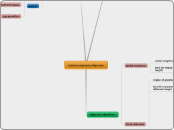Pairwise Sequence Alignment
scoring matrices
TYPES
PAM
based on global alignment of closely related proteins
to compare divergent proteins compute
Dayhoff Model
BLOSUM
directly calculated, no extrapolation
most sensitive detect structural of functional substitution
perform better than PAM
TYPES
BLOSUM 90
short alignment, highly similar
BLOSUM 62
most effective in finding potential similarities
BLOSUM 80
detect known member of protein family
BLOSUM 30
longer weaker local alignment
alignment algorithms
global sequence
entire length of sequence
best for highly similar of sequence similar length
local sequence
region of greater similarity
best for sequence that share some similiraty or different length
BLAST
component
1. choose query
FASTA format
accession number
2. select BLAST programme
types
blastn
nucleotide --> nucleotide
blastp
protein --> protein
blastx
translated nucleotide --> protein
tblastn
protein --> translated nucleotide
tblastx
translated nucleotide --> translated nucleotide
3. choose database
protein sequence database
nucleotide sequence database
4. choose optional parameter
sequence alignment
homology
paralogs
gene duplication
orthologs
common ancestor
identity and similarity
quantitative inference
gaps #
to improve alignment between two sequence
for insertion & deletion
deduction for gaps
G + Ln
gap penalties
opening
extension
